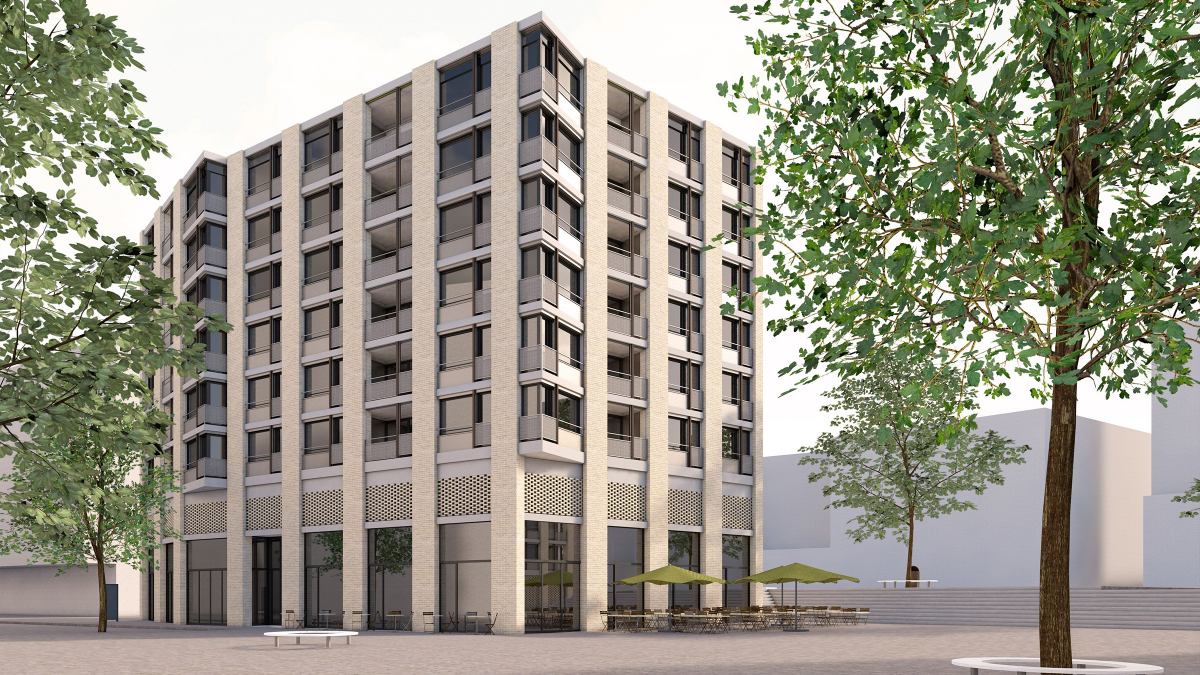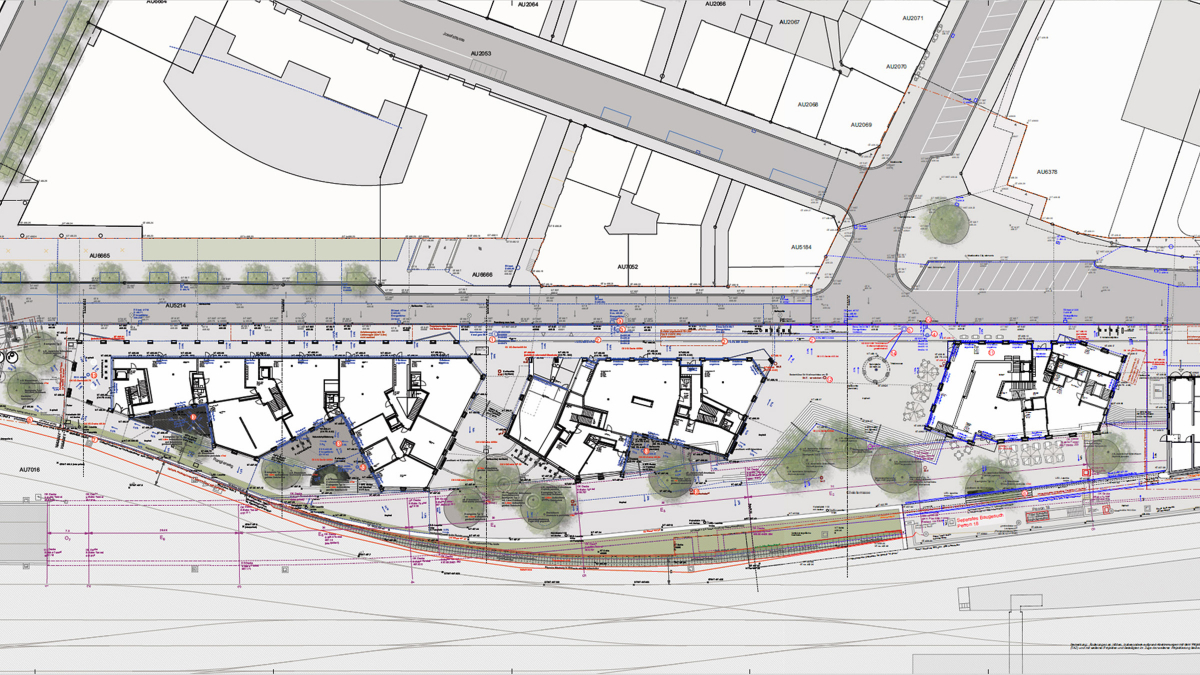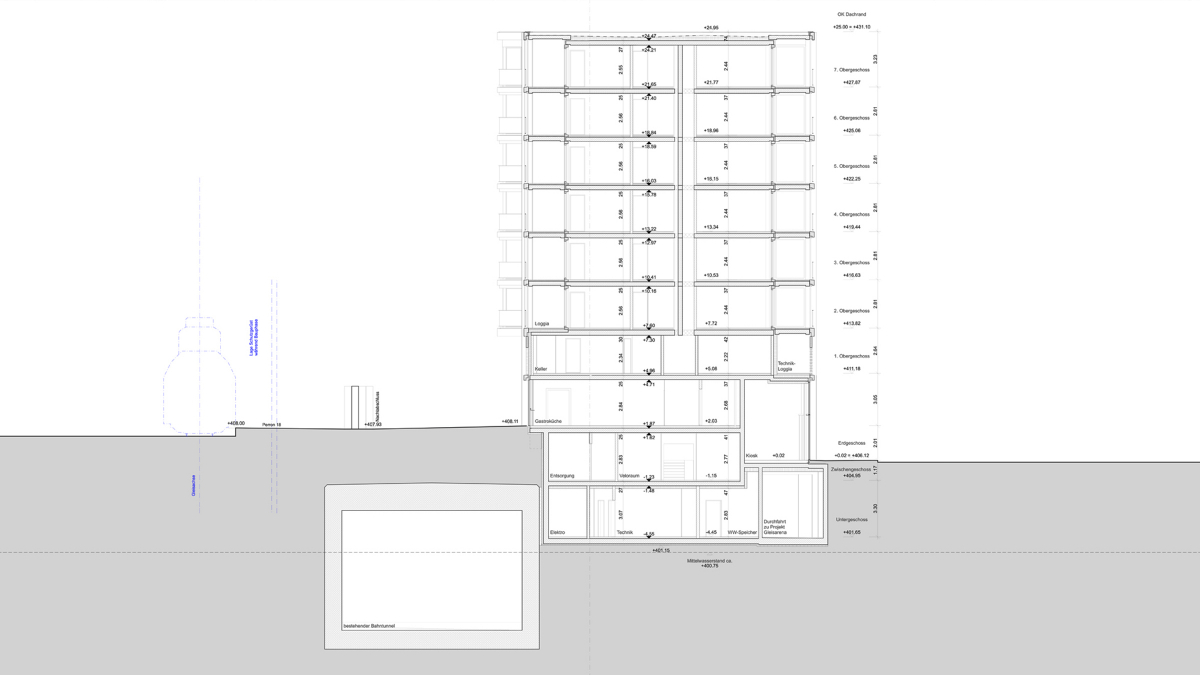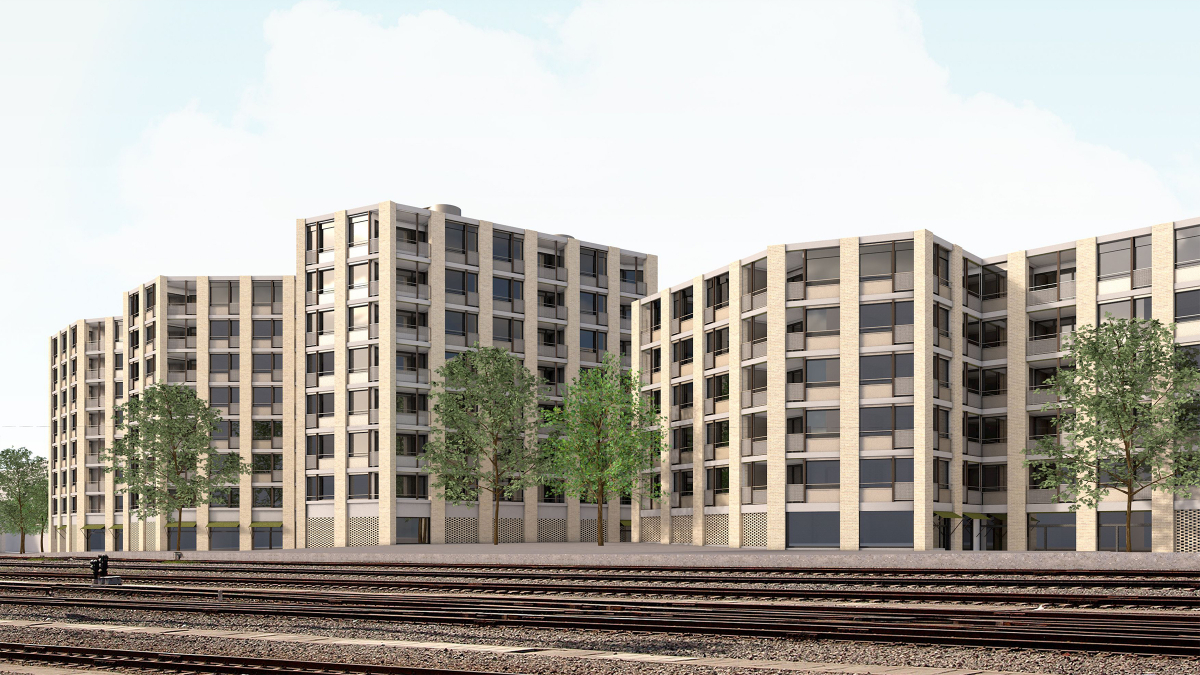Joining forces on our Zollstrasse project in Zurich
Why does a change in the position of the photovoltaic installation on the roof make it necessary to reconfigure structural elements all the way down to the basement? And what do the changes have to do with embodied energy? The planning and design of the "Gleistribüne" at the Zollstrasse East site in Zurich’s Kreis 5 industrial zone is a complex, orchestral task. Bringing everything into exact alignment depends on a highly cohesive interdisciplinary team.
The nondescript narrow strip of land between Zollstrasse and the railroad tracks outside the main railway station in Zurich is about to undergo a remarkable transformation, thanks to a plan by the owner, Swiss Federal Railways (SBB), to breathe new life into the site. According to the plan, a new commercial building and a residential complex consisting of three towers will have sprung up on the site by October 2019. The "Gleistribüne", as the ensemble of future buildings is referred to, is to accommodate both commercial and residential needs, with the upper stories encompassing 140 apartments of various sizes and the ground level providing space for a restaurant, stores and other small businesses. The entire ensemble is to be surrounded by a publicly accessible greenway offering an appealing location to meet with friends or simply pass the time.
Our expertise is important; but what is crucial is the way our experts from different fields work intensively together to solve a problem.
Difficult location next to railway tunnel
Future residents are not likely to be aware of the complex planning that went into the project. For instance, there is the continuous underground level that will effectively link the three towers. This level will be situated directly adjacent to the metropolitan railway tunnel. And the available space is extraordinarily tight. This means that our engineers face the task of making sure that the excavation pit will not interrupt the tunnel’s operation in any way while at the same time complying with the demanding safety specifications.
When the whole is more than the sum of its parts
The planning obstacles often involve various architectural and engineering disciplines. Small changes in one area can have major effects on others. For instance, if the dimensions of the photovoltaic installation on the roof are adjusted upward, the project’s structural engineers will need to account for the additional load all the way down to the underground levels. If additional concrete is needed for a thicker floor, then the building-services specialists may discover that the space they planned to use for their utility lines is no longer available. And those who are responsible for sustainability will need to introduce measures to compensate for the embodied energy in the additional concrete.
We are frequently confronted by unexpected situations. How do we manage these? While expertise is essential, it alone is often not enough to identify a viable solution. Working in the capacity of a full-service architectural design and engineering provider, our team deployed by the Esch Sintzel Architectural Firm is responsible for structural engineering, facade design, sustainability, building-systems engineering (HVAC, plumbing, electrical, building automation) and fire protection. It is major advantage in our case to have various specialists working under the same roof. And if a complex problem arises, we don’t need to arrange consulting appointments with a host of other firms because at EBP we can bring all of our relevant specialists together around one table to consider the issues involved and quickly arrive at viable solutions. In fact, because we keep the big picture in view, we’re also able to detect obstacles at an early stage.
A residential complex with many angles
When the structural engineer and the facade designer considered the option of moving a support element to a location that had been earmarked for a large ventilation unit, they both hastened to add, «But that would sure make life difficult for the building-services planner!» In the end, the three of them got together, worked out a new alternative and discussed it with the architects.
Planning the façade is a complex task that depends on teamwork. The ground plan is irregular and the building has many angles. Still, the façade has to meet the highest standards of quality. Prefabricated clinker-brick supports and concrete elements give the building a basic structure. Behind this is a layer of wooden and metal window frames on the upper stories and wooden window frames in the loggias. A great deal of precision work is necessary to make sure that everything winds up where it is supposed to wind up. Starting with the basic structure and moving to the loggias and the building-systems engineering, numerous specialists coordinate their contributions to the project down to the smallest Detail.
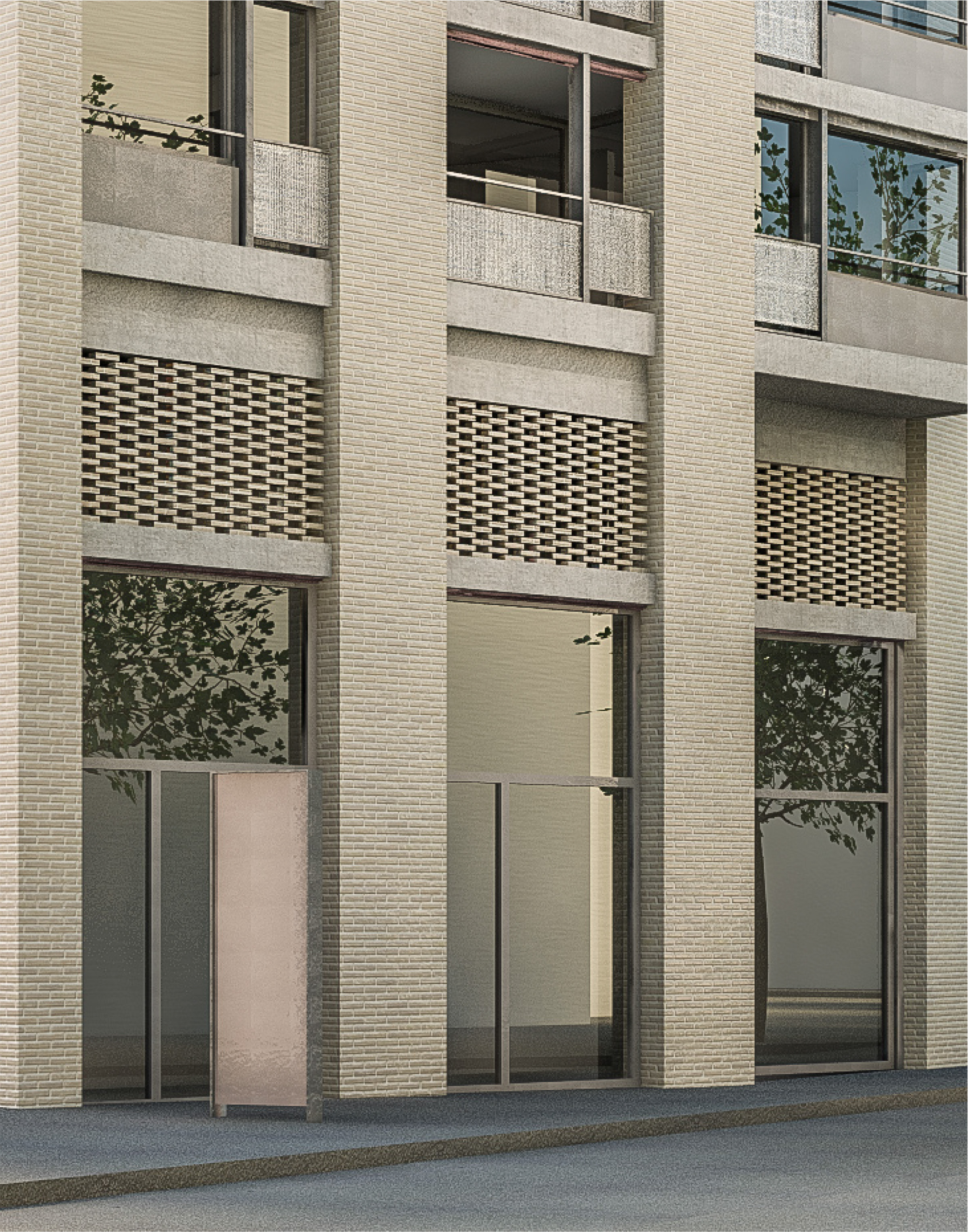
Ambitiously sustainable
Will we be able to meet the Minergie-Eco specifications if the load-bearing wall is made of brick instead of concrete? To what extent will installing a photovoltaic system help us to meet the Minergie-P specifications? And what would this mean for our compliance with the DGNB Gold standard, which applies not only to energy consumption, but to a building’s entire service life? All of our architects and engineers have their plans vetted by our sustainability consultant. After all, the residential complex is to meet the specifications of the DGNB Gold standard and those of the Minergie-P and Minergie-Eco standards. Reconciling all of these requires precise project monitoring. This is because the slightest change, one material substituted for another or a simple coat of paint, might prevent compliance with a given standard. The degree to which we are all sensitized to the issue of sustainability is therefore a big advantage. We discuss conflicting goals over cups of coffee. At the official meetings, we present carefully conceived plans that provide a basis for decision making. It is not only our clients who profit from the cohesive teamwork. We all gain a valuable insight into other areas and continue to learn every day.
Our Team (from left to right):
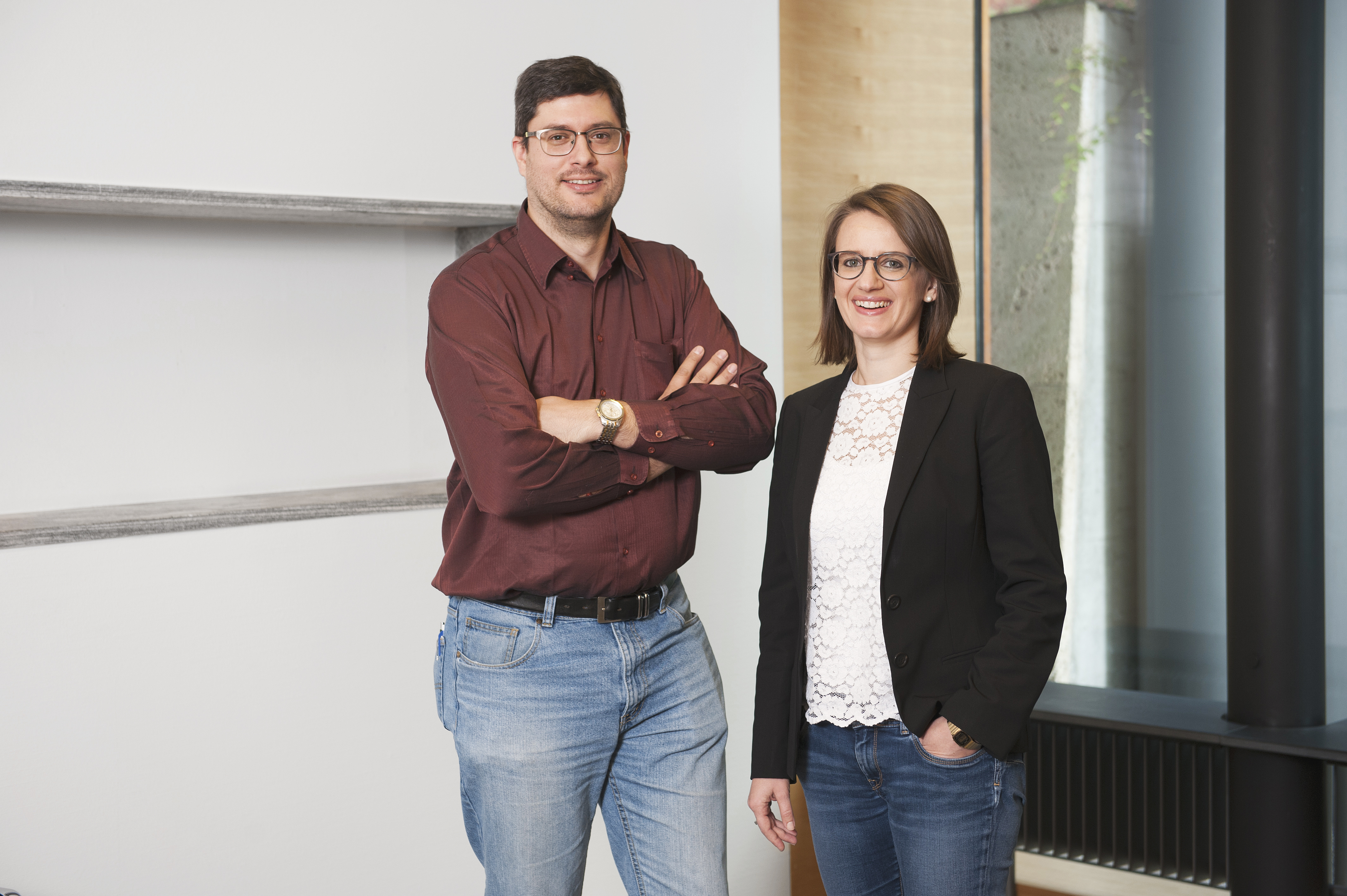
EBP places great value in arriving at optimal fire protection solutions for all of its clients. This naturally also applies to the Zollstrasse development project, where Marcel Lehner is in charge of fire protection. Lehner has worked as a fire-protection specialist at EBP since 2014, after spending twelve years at the firm designing and realizing ventilation systems.
Architect Sabrina Krank, Team Leader, Sustainable Real Estate, has gained extensive and varied experience in recent years while providing consulting services in the area of architectural design and engineering, carrying out DGNB reviews, monitoring construction site progress and conferring with public representatives. In addition to representing EBP at various Swiss organizations working on behalf of sustainable architecture, Krank is a certified DGNB auditor and a LEED Green Associate.
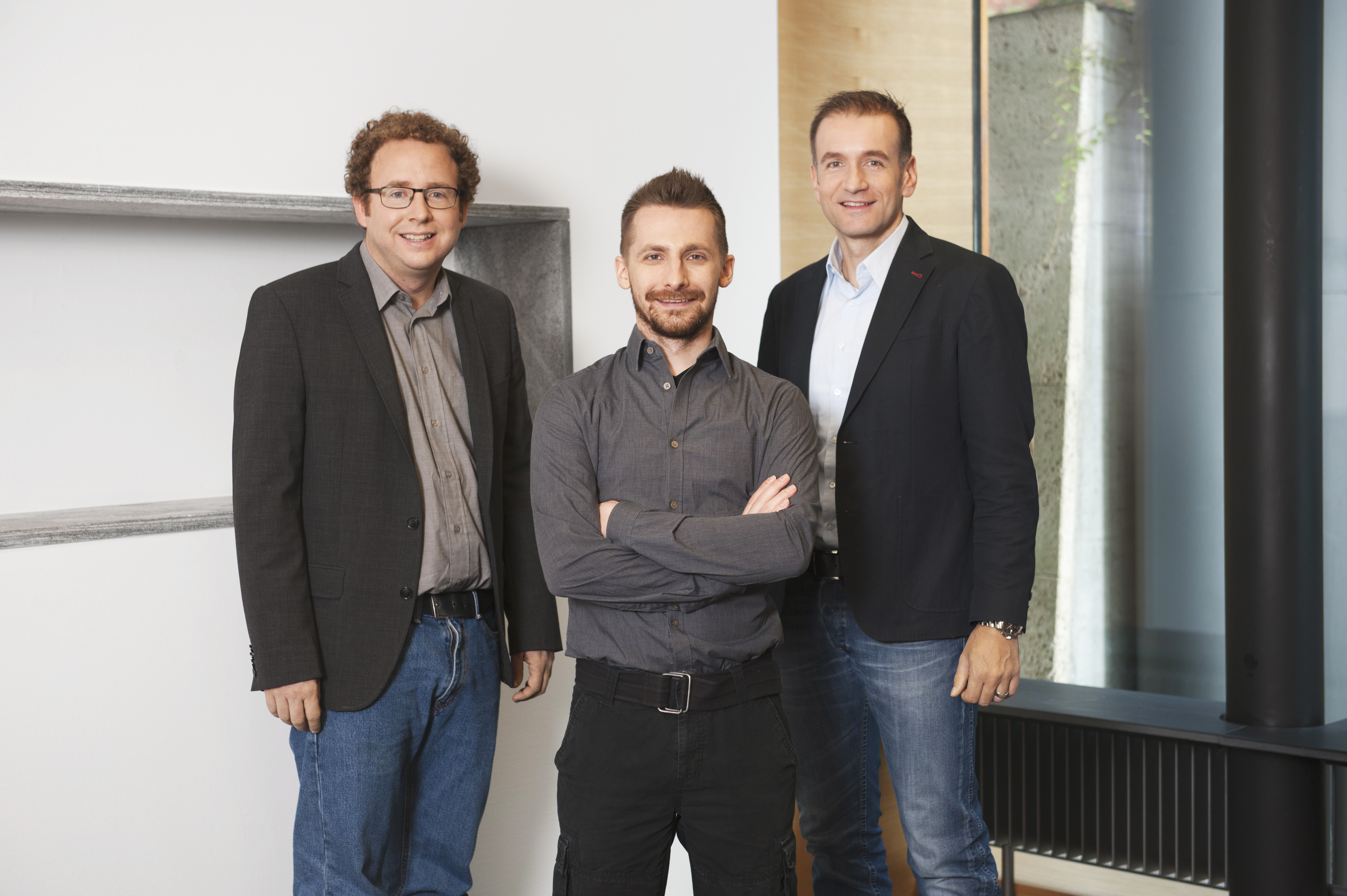
Ranging from structural engineering to earthquake-resistance verification and bridge construction, Daniel Rüegg’s project work is multifaceted. As an engineer, Rüegg heads up our Structural Engineering and Earthquake Resistance Team, a team that is especially adept at devising efficient and creative load-bearing solutions for demanding projects.
Reto Weiss of our Energy and Engineering Unit is an expert for HVAC systems. He is also frequently responsible for planning and coordinating the installation of other building-service components. In addition to his other responsibilities, Weiss planned the photovoltaic installation for the «Gleistribüne», as well as the system enabling the use of groundwater for purposes of heating.
Marco Bachmann heads up the Façade Engineering Team. With extensive know-how and experience, Bachmann and his team members play an important role in ensuring architectural sustainability. Working in close consultation with architects and engineers, the team develops project-specific solutions for building envelopes in the framework of new construction and renovation projects.
